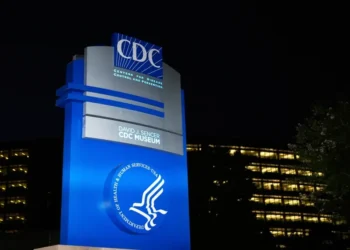Water Fluoridation Under Fire: Kennedy, EPA Spark Nationwide Rethink
Once hailed as a breakthrough in public health, water fluoridation is now facing serious scrutiny — and some powerful forces are driving the shift.
U.S. Health Secretary Robert F. Kennedy Jr. announced this week that he plans to direct the CDC to stop recommending fluoride in community water systems. He’s also forming a task force of health experts to review the issue and potentially rewrite national guidance.
At the same time, the Environmental Protection Agency (EPA) said it will revisit the science on fluoride’s health effects — a move that could reshape water standards nationwide.
Fluoride has been added to U.S. drinking water for over 70 years to help prevent tooth decay. Back in 1950, federal officials gave it the green light, and by 1962, dosage guidelines were in place. Today, nearly two-thirds of Americans drink fluoridated water, according to the CDC.
Public health experts have long considered it a major success story, with the American Dental Association crediting it for reducing cavities by over 25% in both children and adults.
But not everyone is convinced it’s risk-free. Studies over the years have raised red flags, especially at higher-than-recommended fluoride levels. Side effects like white streaks on teeth have been observed, and recent research has even pointed to possible links between excess fluoride and lower IQ in children.
A 2023 federal report found that kids in countries where fluoride levels exceeded 1.5 milligrams per liter — more than double the CDC’s recommendation — were more likely to have lower IQ scores. While the science isn’t conclusive, a federal judge has ordered the EPA to take the concerns seriously and reexamine fluoride regulations.
Kennedy, a former environmental lawyer, hasn’t held back. He’s labeled fluoride a “dangerous neurotoxin” and blamed it for everything from arthritis to thyroid issues.
While critics argue the evidence is mixed and often inconclusive, Kennedy’s influence is strong — and he now holds the power to change the CDC’s recommendation. Even though he can’t force states or cities to stop fluoridating, his actions could reshape national policy.
“The power lies with the secretary,” said Georgetown health law expert Lawrence Gostin. “But public trust would erode if changes happen without clear scientific backing.”
Some communities aren’t waiting for federal action. Utah recently became the first state to ban fluoride in drinking water entirely. And data from the CDC shows the trend is spreading.
An Associated Press analysis found that in the last six years, 734 water systems across 36 states have stopped fluoridating — most often for cost-related reasons. In Mississippi, for example, one in five discontinued systems are located there, many never restarting after pandemic-era supply issues.
The CDC has historically provided modest funding to support oral health programs in 15 states — around $380,000 per state over three years. But the funds can’t be used to buy fluoride chemicals, only to support efforts like data collection and education.
Earlier this year, the entire 20-person CDC Division of Oral Health was eliminated as part of government staffing cuts. With CDC leadership in flux, it’s unclear what will happen to oral health funding moving forward.
Even so, fluoridation is relatively inexpensive. In Erie, Pennsylvania, for example, it costs just $35,000–$45,000 a year to fluoridate water for 220,000 people — fully covered by local water rates.
Experts say cutting CDC funding likely won’t affect large urban systems, but could have a greater impact on smaller, rural communities that rely more heavily on federal support.
Kennedy says his newly formed task force will dig into the science — but he’s already made up his mind. Whether the broader scientific community or local governments follow suit remains to be seen.
As the EPA and CDC reassess long-standing policy, one thing is clear: the future of water fluoridation in the U.S. is officially in question.
Source: AP News – Why water fluoridation, long considered a public health success story, is under scrutiny

















